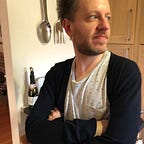Build it up, then knock it down
If you work in a PR or communications agency, how many times has a pitch or project process started with “We should get someone to do some research into this company/area/product”?.
If you hear this again, the response should be, “No, we shouldn’t. Everyone involved should do some research into this company/area/product”.
When we delegate the research process to one person or another internal team, we’ll likely end up relying solely on the most obvious information. And obvious information will only generate obvious and generic answers.
To find something truly different that will uncover a fresh, new approach, we need a multiplicity of sources and views. As Rob Estreitinho says in one of this week’s Salmon Theories, “Go long, wide, random, weird. Highlight what feels fresh.” That task is everyone’s responsibility. Everyone should aim to increase their knowledge of the client and their challenge. Everyone needs to put some time in.
Maybe a change of vocabulary is required. Research sounds dusty and a bit boring. And let’s be honest, unless we’re commissioning new first-party research (uncommon in comms/PR), we’re not doing proper research.
Let’s call it ‘Exploration’. “Everyone go away and explore this topic” sounds more adventurous. It’s much more akin to what we want out of the process. Something new, something different — something that will spark a new idea or provide the fodder for unique combinations. Third-party research is always likely to fall into the bucket marked “no shit Sherlock”. Exploration should aim to uncover that which we can mould into something a bit different.
Once everyone’s explored and has a good spread of opinions and information, it’s time to strip it all back to the essentials.
Stripping it back is the hardest part. It’s hard because it’s counterintuitive to our human nature. A recent study published in Nature shows that “people systematically overlook subtractive changes”. Our instinct in any situation relating to change is to add to what exists. We neglect subtraction. But the risk of only ever adding to ideas and our decks is bloat. “Look how smart we are, look at all the research and THINKING we put into our idea”.
Clients don’t care about that. They want to see the idea, not the working behind the idea.
That’s why stripping everything back, knocking down the superfluous elements and streamlining your thinking is so important. But it is also the most challenging part. Don’t be tempted to skip the “build it up” / “go long” step. If you go straight for simplicity, you’ll end up super-obvious. Get out and explore and immersed in your client’s world. Then strip it all back until you’ve got to the nub of the problem. That’s the way to unlock great creative and avoid burdening your junior team members with mountains of pointless research.
